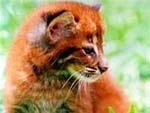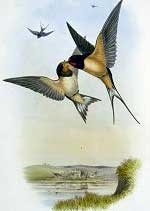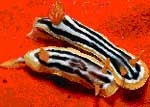On Phillip Island, part of the Norfolk Islands in the South Pacific, the Cormocephalus coynei centipede is capable of killing and consuming thousands of young seabirds each year.
The C. coynei, an endemic species on Phillip Island, has a diet that includes a significant amount of vertebrates, particularly young seabirds. Typically, seabirds are apex predators in the oceanic food chain. However, a study published in The American Naturalist reveals that this is not always the case.

A young petrel on Phillip Island. (Photo: Trudy Chatwin).
This large predatory arthropod plays a crucial role in the food web of the island’s ecosystem. The Phillip Island centipede survives due to its extremely diverse diet. This centipede can grow nearly 30.5 cm long and possesses a potent venom located in its claw-like appendages, which it uses to immobilize its prey. Its body is protected by shield-like plates arranged along each segment.
On warm, humid nights, the giant centipede hunts by weaving through seabird burrows in the forest floor. It utilizes its two highly sensitive antennae to locate prey. The centipede preys on creatures ranging from crickets to young seabirds, geckos, and short-legged skinks. It even hunts fish that the black-naped tern (Anous minuta) may drop from its nest in the trees.
The Phillip Island centipede attacking a young black petrel. (Video: Daniel Terrington).
Shortly after beginning research on the seabird ecosystem on Phillip Island, researcher Luke Halpin from Monash University and his team discovered that the young of the black petrel (Pterodroma nigripennis) had become prey for the Phillip Island centipede. The scientists decided to delve deeper into the feeding habits of this large centipede.
To understand what the centipedes were eating, Halpin’s team observed their nocturnal foraging activities and recorded which species they targeted. They also monitored the young petrels at their nests several times a week over many months. The researchers began to notice consistent injury patterns among the young birds that were killed. They even witnessed a centipede attack and consume a chick.
Based on the predation rate, the experts calculated that the Phillip Island centipede could kill and consume approximately 2,109 to 3,724 young petrels each year. The population of black petrels, estimated at 19,000 pairs on the island, appears to be resilient against this predator. By preying on vertebrates, the centipedes help recycle nutrients from seabirds and distribute them throughout the island. In other words, they occupy the ecological niche of predatory mammals that were once present on the island.
Until a few decades ago, the Phillip Island centipede was extremely rare. In fact, it was officially described as a new species only in 1984. Following a large-scale study in 1980, scientists found only a few small individuals. Their rarity was likely due to severe habitat degradation caused by pigs, goats, and rabbits that humans introduced to the island. The removal of these invasive species has allowed the black petrel population to thrive, making it the most numerous among the 13 seabird species that breed on Phillip Island. This, in turn, provides a high-quality food source for the centipedes and aids in the recovery of their population.





















































